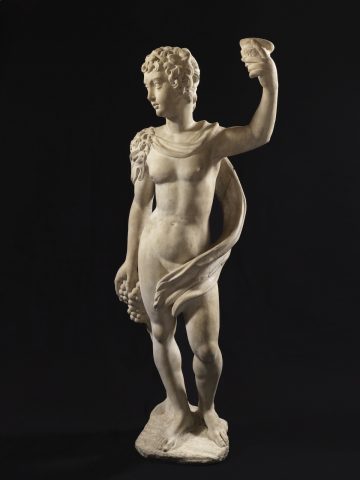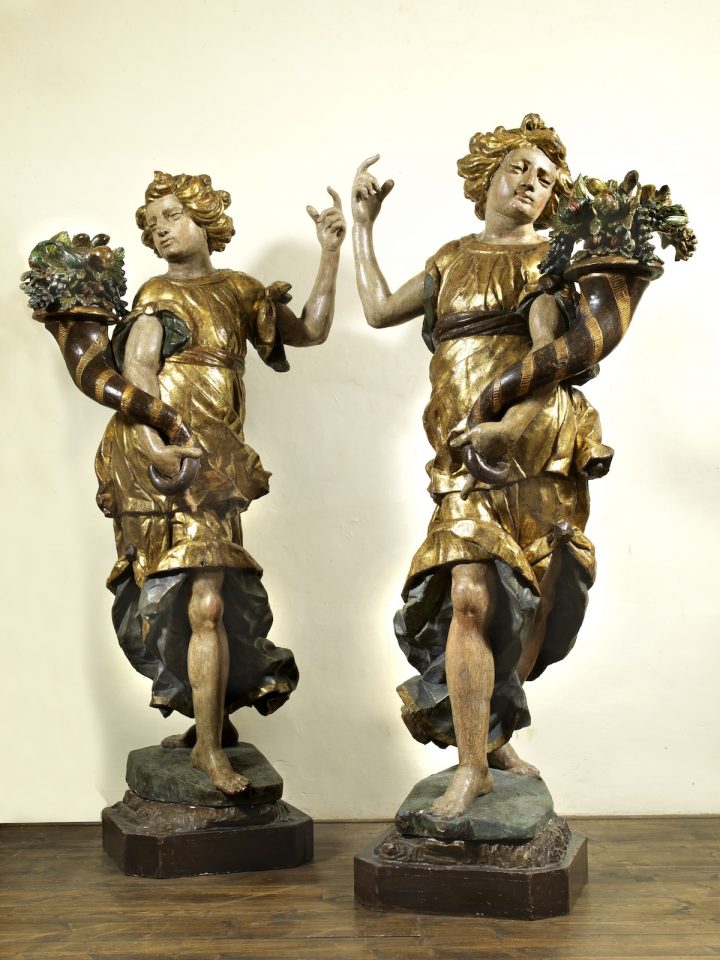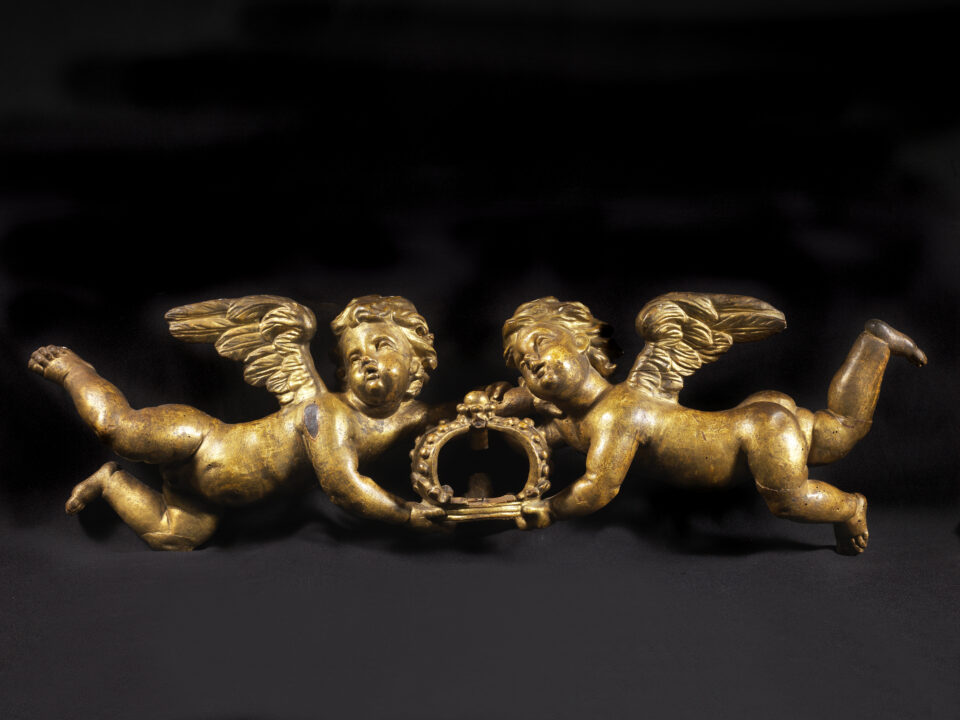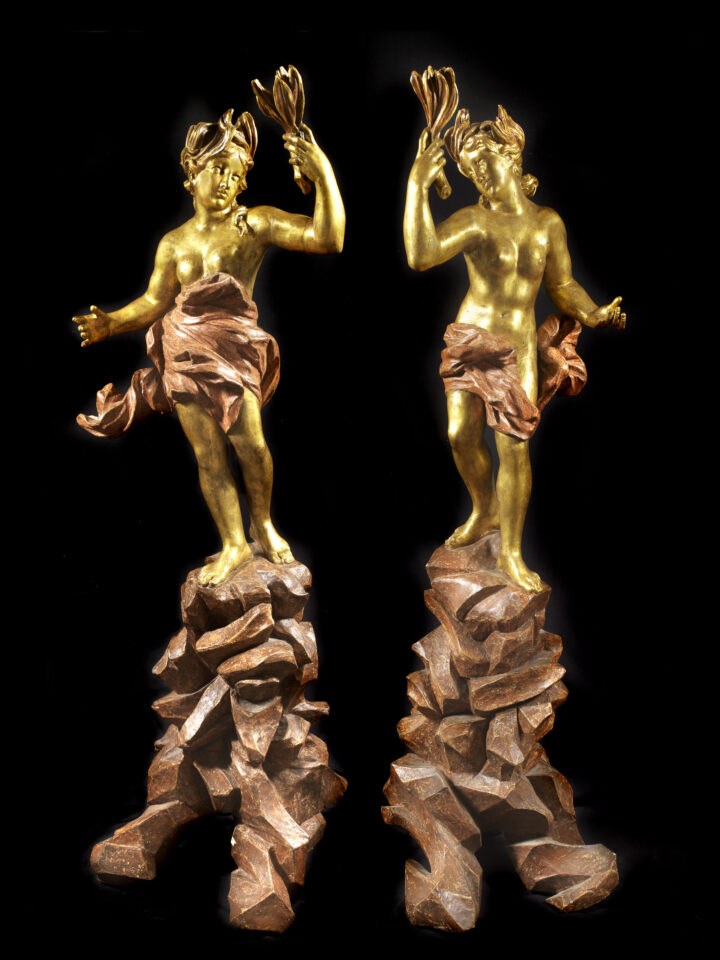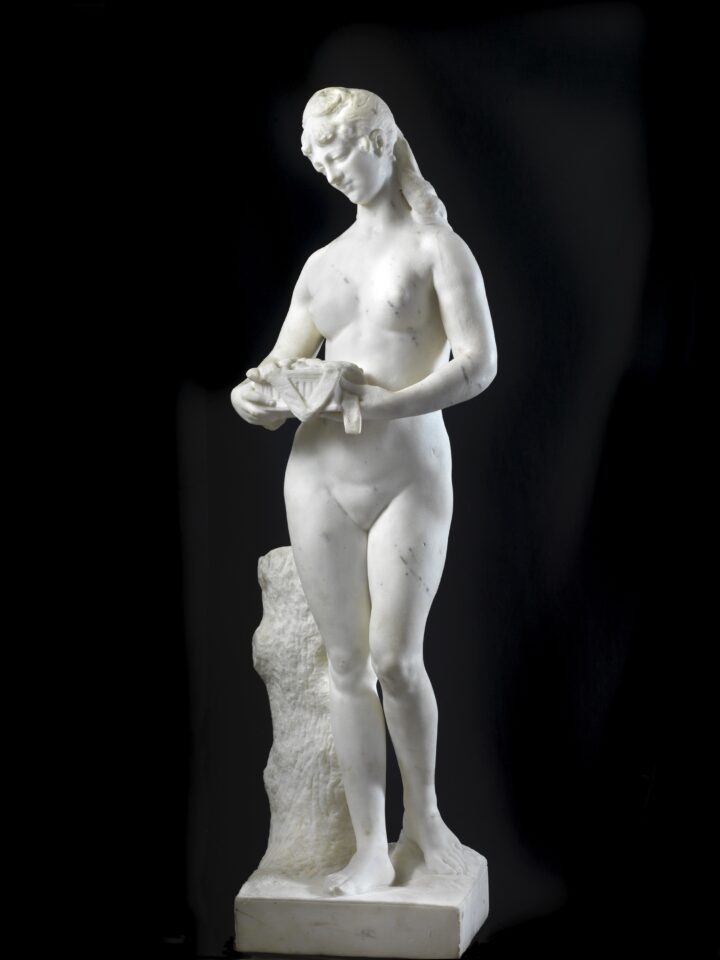ISIDORO FRANCHI
Carrara, 1660/65-Florence, 1720 ca.
Bacchus
marble, cm 145 height
Bacchus, the ancient classical divinity, gaily lifts the wine-cup, while he holds a cluster of grapes in his other hand. The handsome body of the young god is covered by a fluid mantle which gives the figure movement, modestly covering his nudity.
Sandro Bellesi has attributed this marble sculpture, “which may be dated to the late Seventeenth century” to the late baroque Tuscan school, and specifically to Isidoro Franchi. After moving from his native Carrara to Florence at a young age, the sculptor, on completing an initial apprenticeship with Giovan Battista Foggini, opened his own workshop in the city in 1684; he was later to form a professional team with his colleague Anton Francesco Andreozzi. Franchi, an artist who “favoured a stylistic language rich in refined eclecticism”, was initially influenced by Foggini’s interpretation of the baroque style, and later by the more traditionalist tendencies of Fortini; in this work he gives proof of a “simple and incisive language” which, according to the scholar, seems to anticipate the developments of the Eighteenth century, characterized by a certain “descriptive sobriety” as found in sculptors as Vittorio Barbieri.
As comparisons for this sculpture, which probably originally decorated a garden or a loggia of a patrician mansion, Bellesi suggests in particular the “works executed by Franchi in the last decade of the Seventeenth century”, as the Resting Hercules at the Del Chiaro palazzo in Florence, of 1694, and the slightly later sculptures featuring Paris and Juno at the palazzo Del Sera, also in Florence, as well as the Meleagro in a private collection which was recently published, which like the sculpture presented here are “clearly indebted in typological terms to Michelangelo’s famous Bacchus” at the Bargello.

